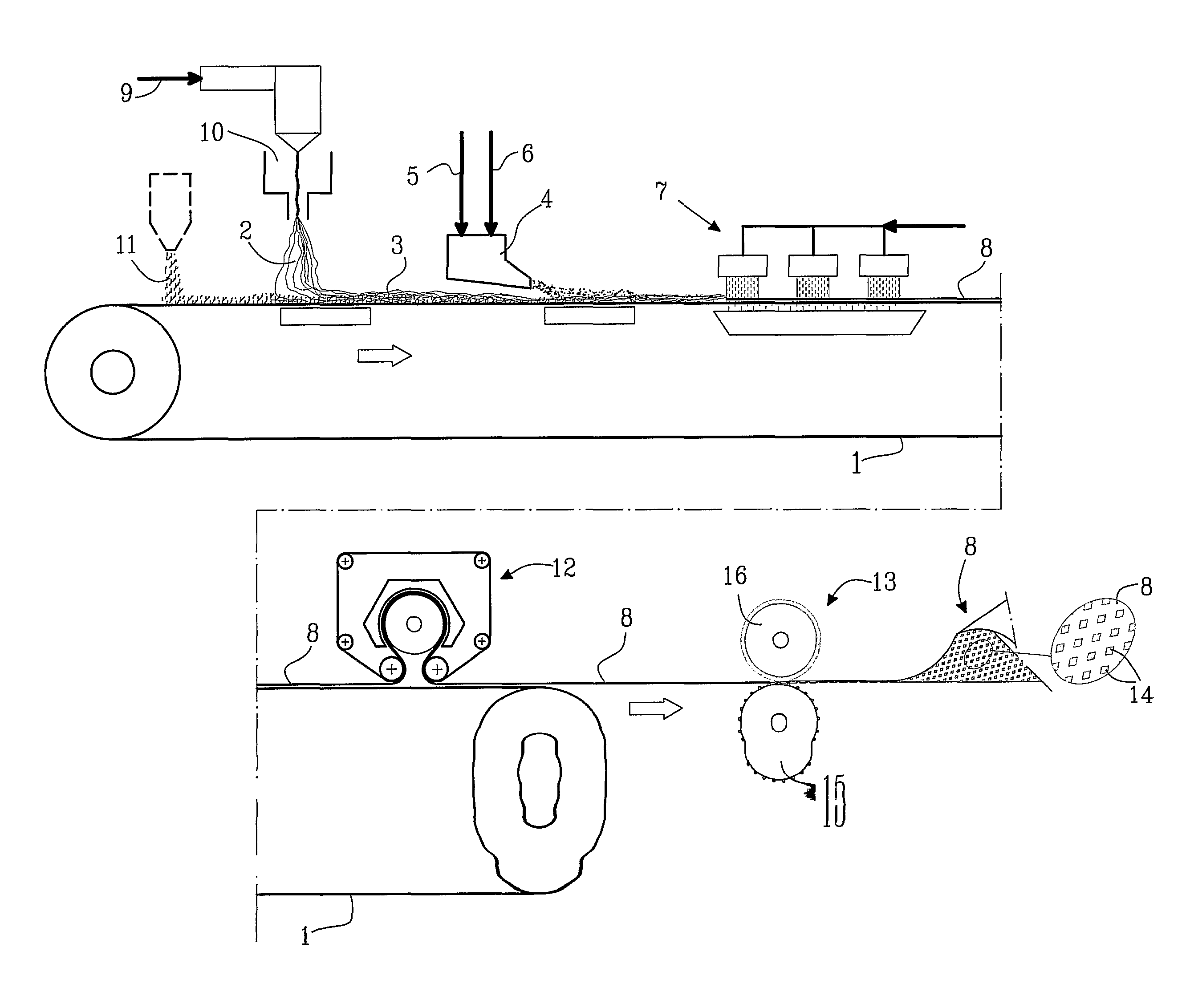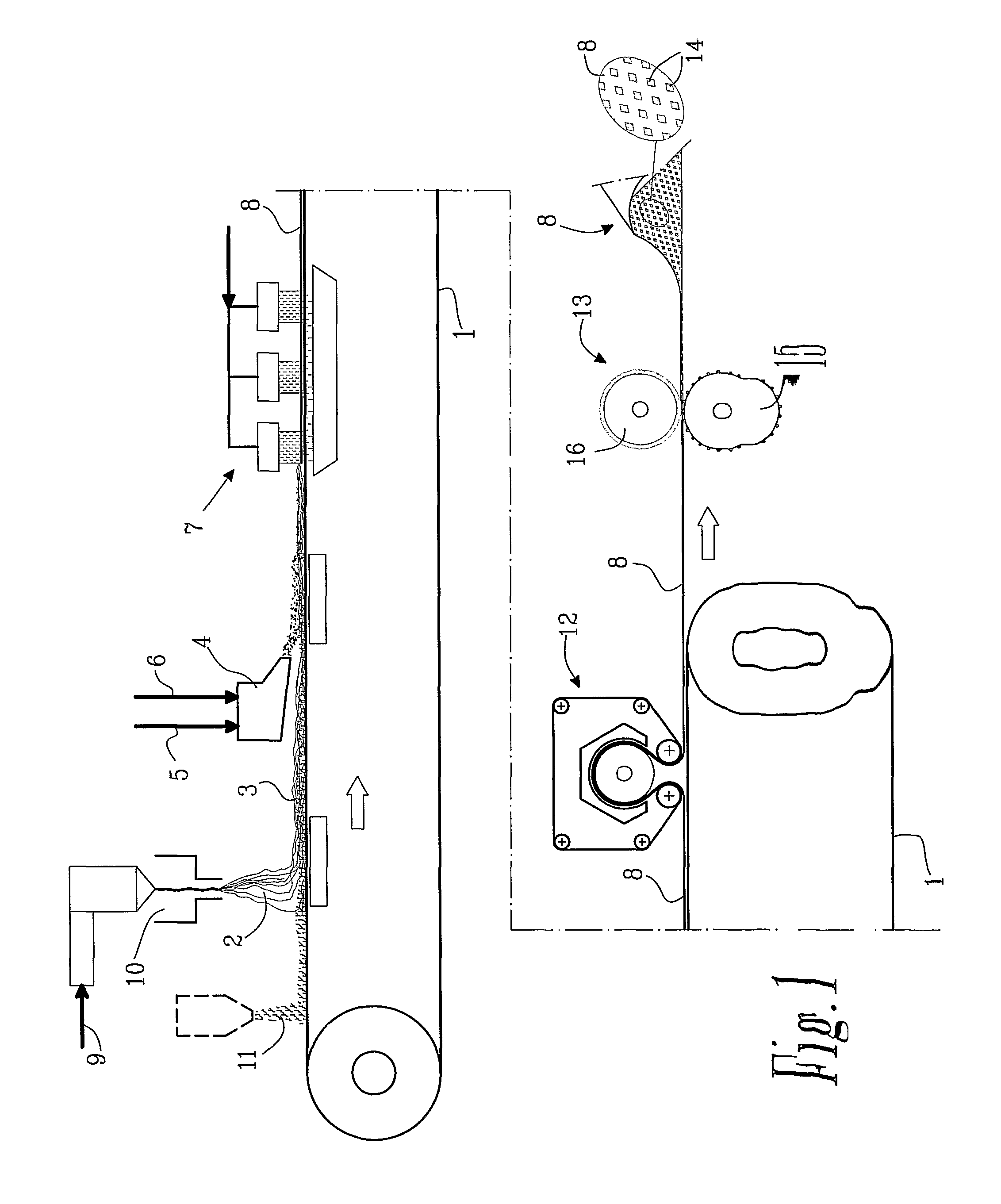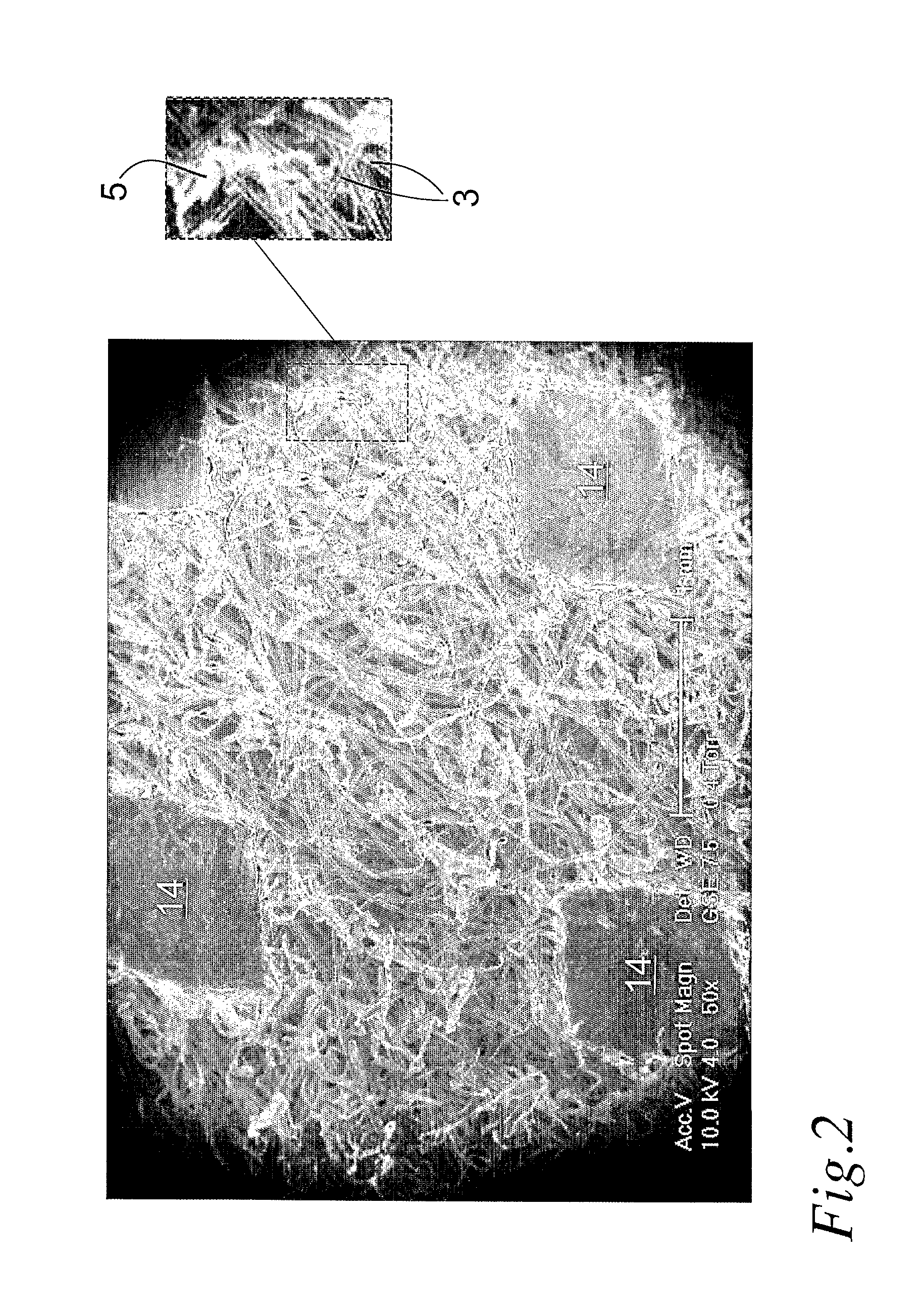Hydroentangled nonwoven material
a non-woven material and hydroentanglement technology, applied in the field of hydroentanglement non-woven materials, can solve the problems of high hydroentanglement energy required to combine pulp fibers with bonded spunlaid webs, and the fibers of the different fibrous webs will not be integrated with each other, and achieve the effect of high melting component and low melting componen
- Summary
- Abstract
- Description
- Claims
- Application Information
AI Technical Summary
Benefits of technology
Problems solved by technology
Method used
Image
Examples
example 1
[0081]A 0.4 m wide web of spunlaid filaments was laid down onto a forming fabric at 20 m / min such that the filaments were not bonded to each other. By a 0.4 m wide headbox a fibre dispersion containing pulp fibres and shortcut staple fibres was laid onto the unbonded web of spunlaid filaments and the excess water was drained and sucked off.
[0082]The unbonded spunlaid filaments and wetlaid fibres were then mixed and bonded together by hydroentanglement. The hydroentanglement was done from the free side and the pulp and staple fibres were thus moved into and mixed intensively with the spunlaid filament web. The hydroentangled material was dewatered and then dried using a through-air drum drier. Finally the material was thermobonded from the fabric side using a hot calendaring technique (Hot S-Roll Technology by Andritz Küsters GmbH & Co. KG, Germany) and using different bonding patterns with different bonding densities and bonding areas.
[0083]The total basis weight of the tested filam...
PUM
| Property | Measurement | Unit |
|---|---|---|
| bonding area | aaaaa | aaaaa |
| length | aaaaa | aaaaa |
| length | aaaaa | aaaaa |
Abstract
Description
Claims
Application Information
 Login to View More
Login to View More - R&D
- Intellectual Property
- Life Sciences
- Materials
- Tech Scout
- Unparalleled Data Quality
- Higher Quality Content
- 60% Fewer Hallucinations
Browse by: Latest US Patents, China's latest patents, Technical Efficacy Thesaurus, Application Domain, Technology Topic, Popular Technical Reports.
© 2025 PatSnap. All rights reserved.Legal|Privacy policy|Modern Slavery Act Transparency Statement|Sitemap|About US| Contact US: help@patsnap.com



